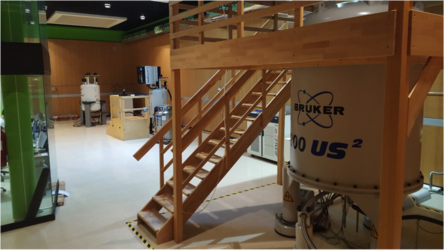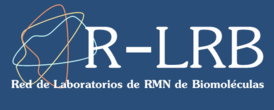
Laboratorio de RMN de Euskadi
The CiC bioGUNE research center investigates on the molecular bases and mechanisms of various diseases in order to develop new diagnostic and prognostic methods as well as drug and vaccine candidates. The biomedical research topics include, in particular, cancer, metabolic, rare, and infectious diseases.
Solution state NMR is a core analytical technique at CiC bioGUNE and supports many of its research lines. As a most versatile, quantifiable, and non-destructive technique, NMR allows to analyse a wealth of molecular properties with atomic resolution, such as composition, structure, dynamics, reactions, size, aggregation, protonation, and interactions.
The modern, ample complementary hardware and highly experienced staff at the CiC bioGUNE NMR platform can provide services for almost all applications of solution state NMR, also to external and commercial users. Special fields of competence cover:
• the full range of biomolecular NMR on proteins, carbohydrates, and their complexes, including analyses of their structures, dynamics, and interactions
• the emerging field of biomolecular 19F NMR to study interactions between (isotopically labeled) proteins and fluorinated ligands with unprecedented spectral dispersion
• automated small-scale ligand screening
• automated metabolic studies, compliant with certified (BRUKER) standards
• NMR methods development

The CiC bioGUNE NMR platform primarily offers competitive access to its 600 MHz and 800 MHz AVANCE III spectrometers that are dedicated to biomolecular (including 19F and 31P) applications. Access to the specialised 600 MHz IVDr spectrometer for metabolomics studies can only be granted exceptionally.
Current main areas of research at the CiC bioGUNE NMR platform include:
• Interaction studies between large molecular machines (DNA sliding clamp, ribosome) and protein factors (including intrinsically disordered proteins).
• Carbohydrate NMR: analysis of the conformation and dynamics of oligosaccharides and their recognition by receptor proteins (lectins). The latter studies often involve deoxy-fluoro substituted saccharides and novel biomolecular 19F NMR methodology.
• Protein NMR: analysis of ion (and other cosolute) effects on protein stability (halophilic adaptation), allosteric regulation of protein interactions, protein/protein interactions.
• NMR methodology: diagonal-free NOESY experiments, methods to recover and exploit unused polarisation, TROSY optimisations, biomolecular 19F NMR experiments
Instrumentation at the LRE

The NMR platform at CiC bioGUNE houses three modern BRUKER spectrometers with complementary equipment to suit distinct needs:
800 MHz AVANCE III for biomolecular NMR at highest sensitivity and resolution:
Accessory:
TopSpin version: 3.2.7 (CentOS)
4 channels: 1H, 2H, 13C, 15N
Probehead: cryo TCI
600 MHz AVANCE III for multinuclear NMR beyond standard applications:
Accessory:
TopSpin version: 3.2.7 (CentOS)
5 channels: 1H/19F, 2H, 13C, 15N, X
Probeheads (* = with triple axis gradients):
• PA-TXI*
• TXI* for high salt concentrations
• TBI (31P – 109Ag)
• QXI-P* with X = 31P
• QXI-F with X = 19F
• SEF
specific 19F equipment
automatic sample changer: SampleXpress
optionally with N2 evaporator to reach down to -80 ºC
600 MHz IVDr (AVANCE IIIHD)
Accessory:
TopSpin version: 3.5.4 (Windows)
3 channels: 1H, 2H, X
automatic sample changer: SampleJet
probehead: BBI
